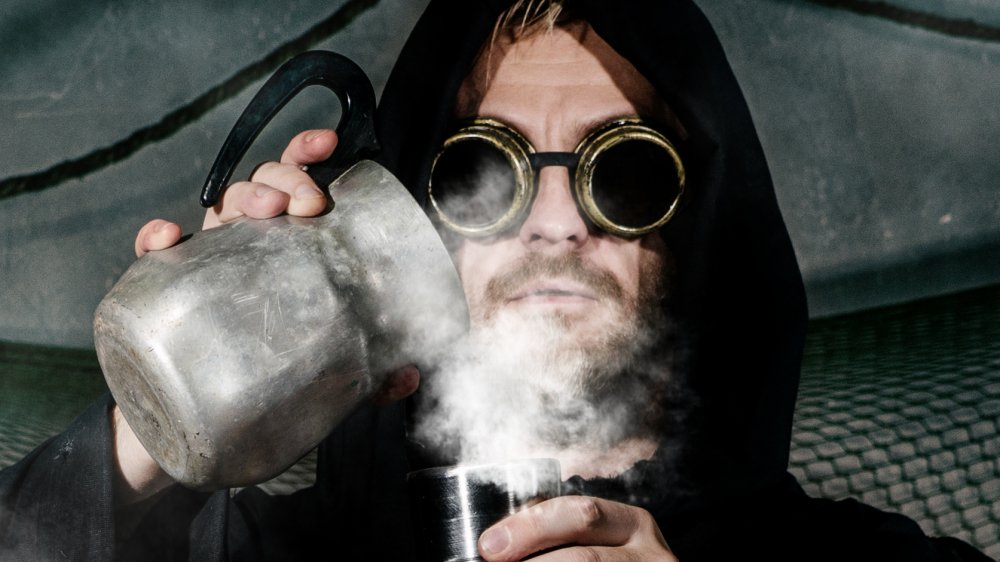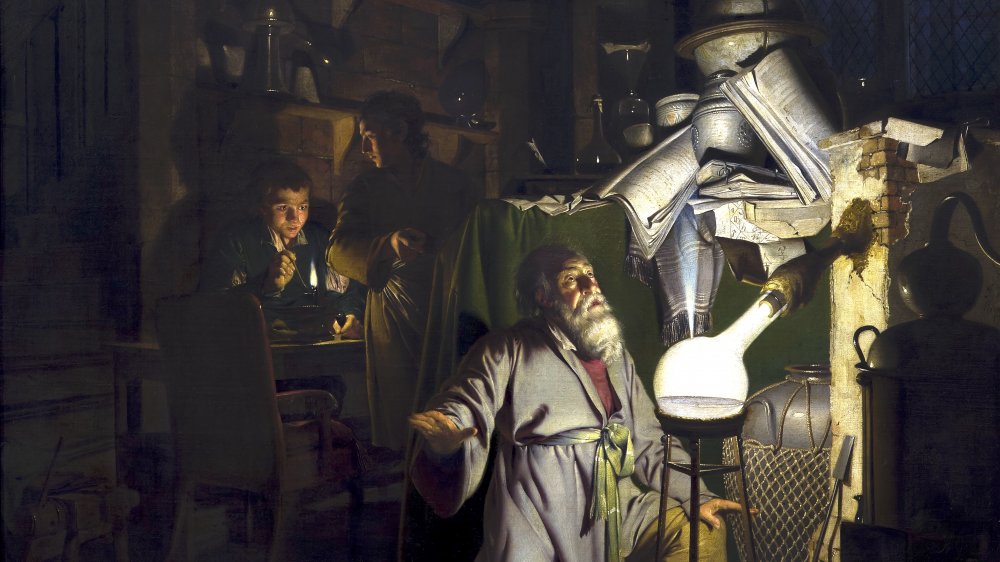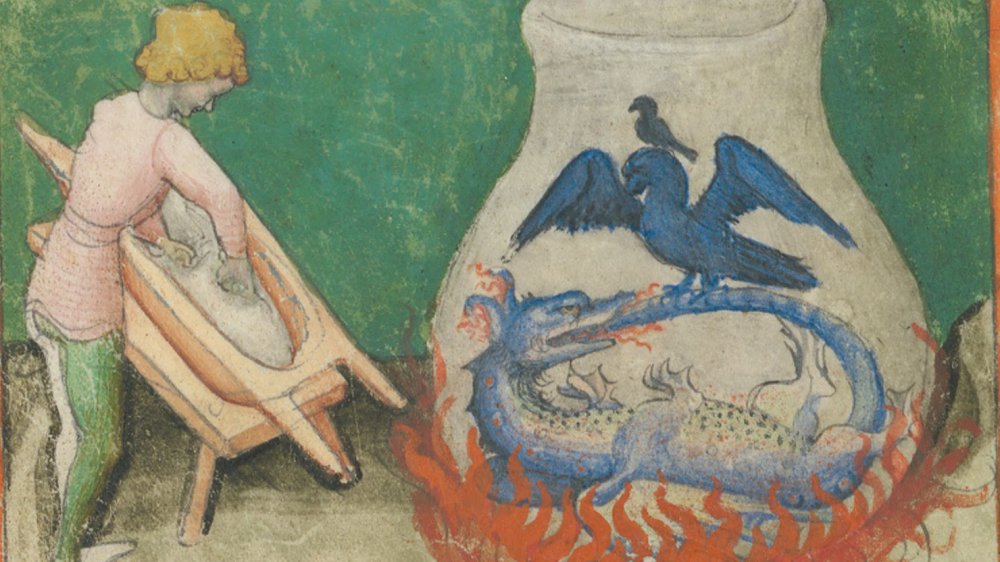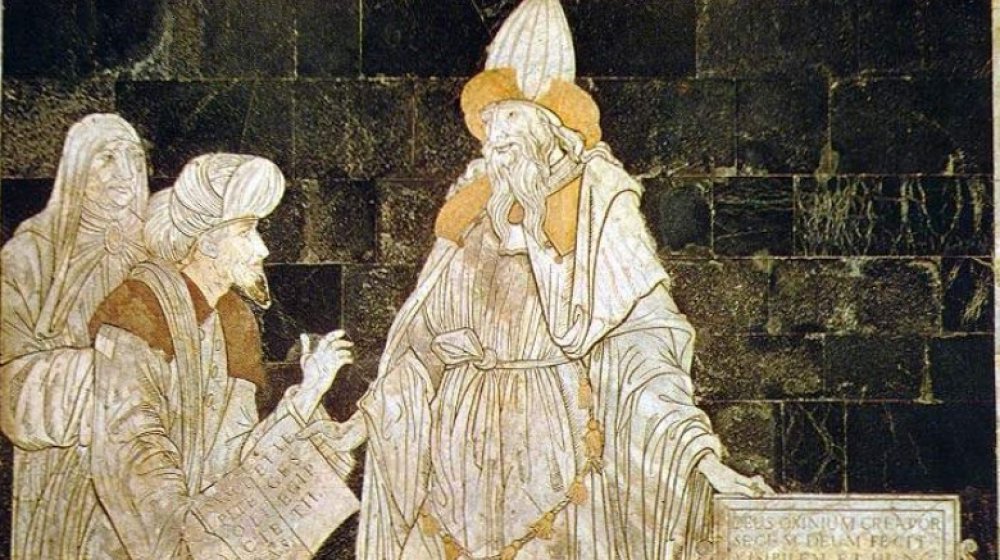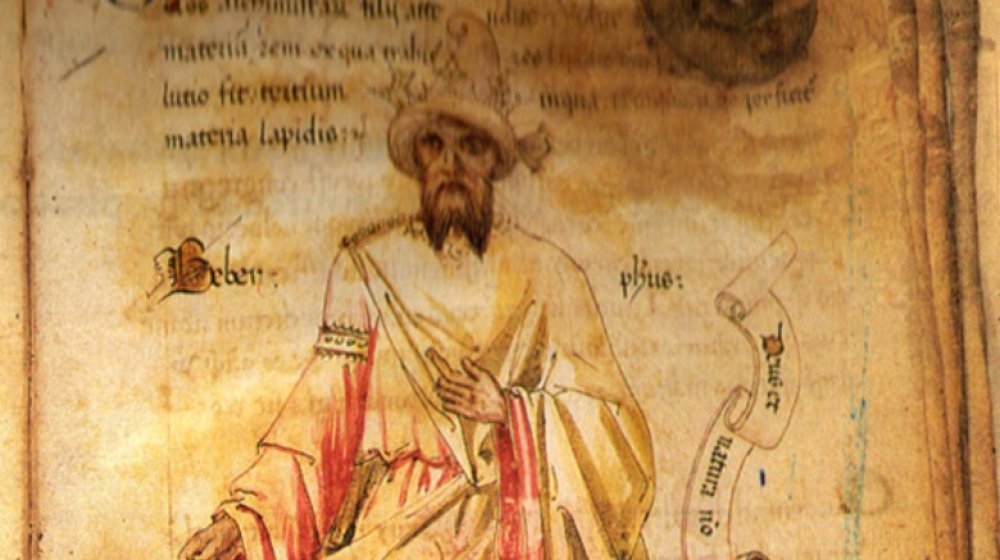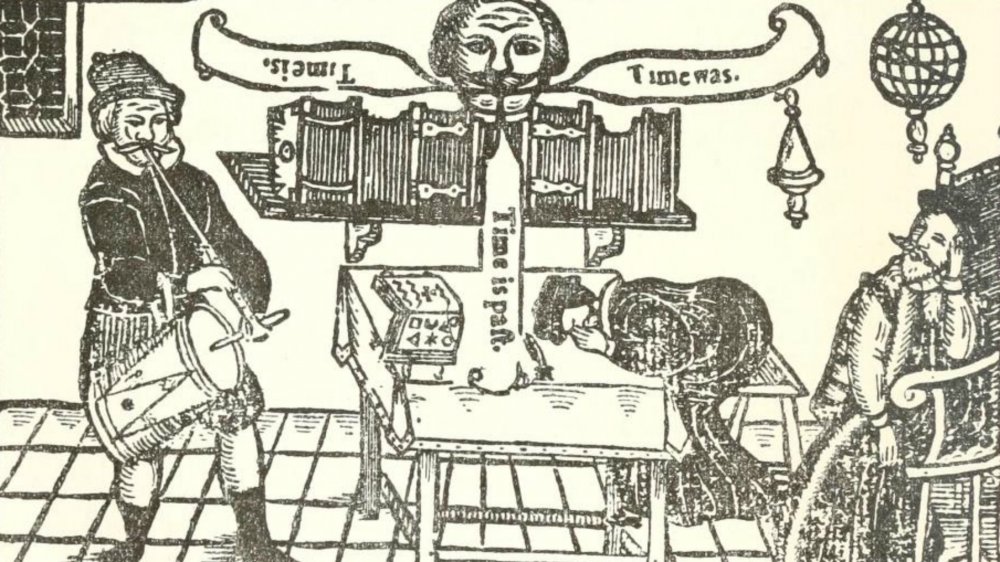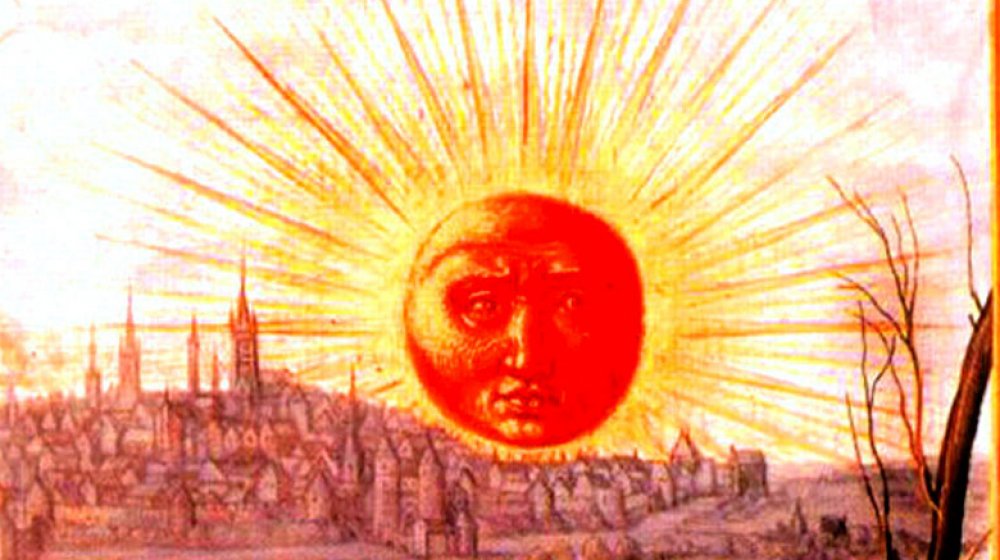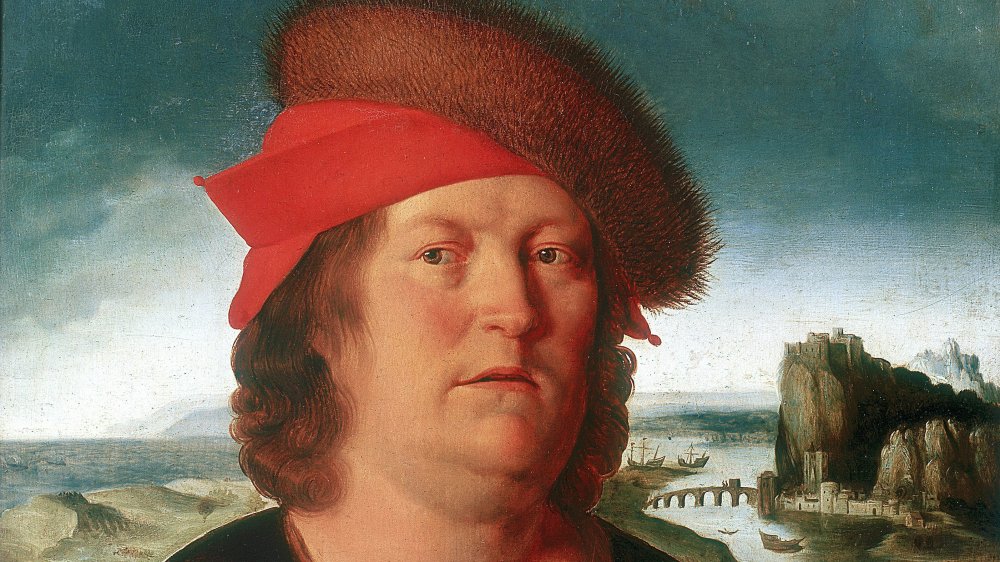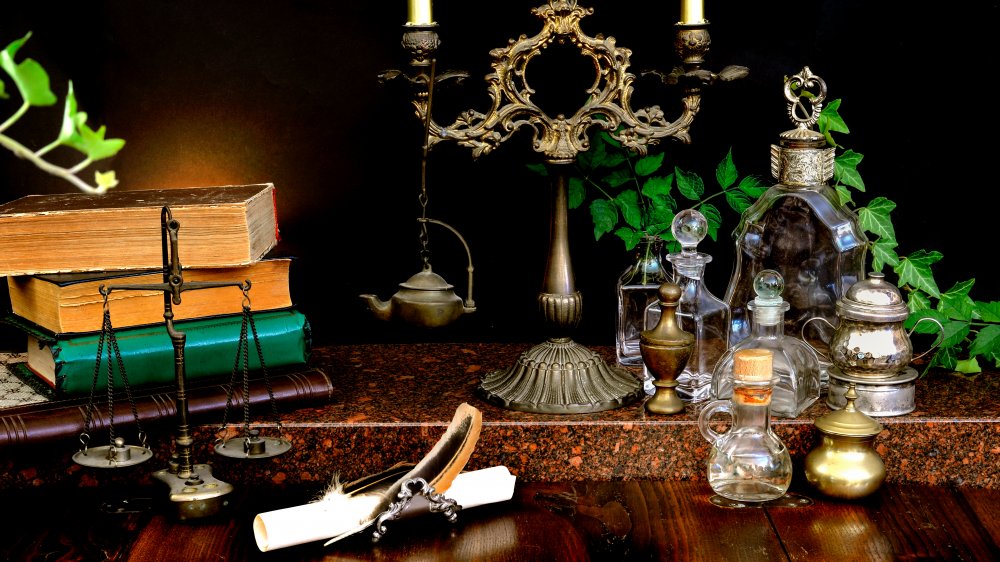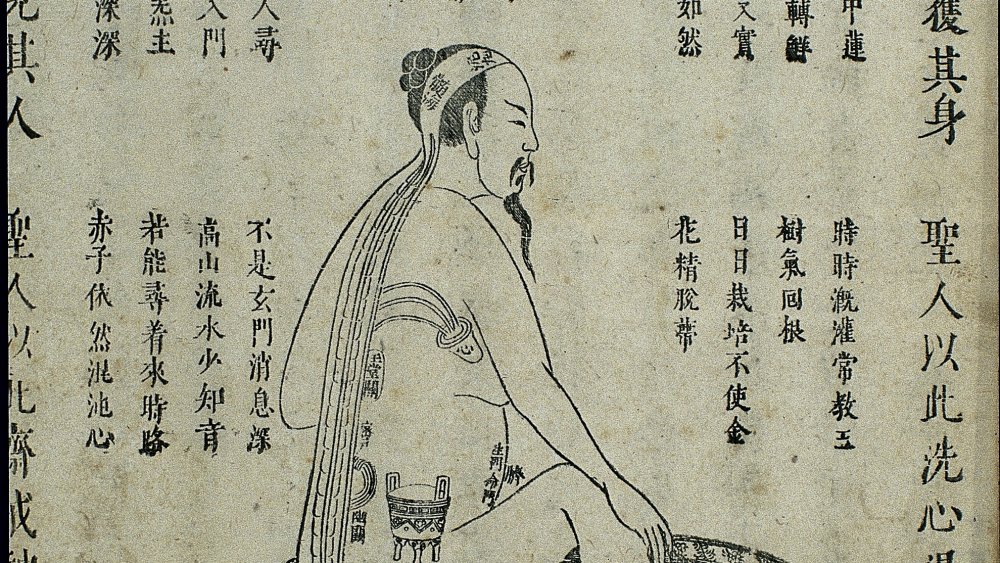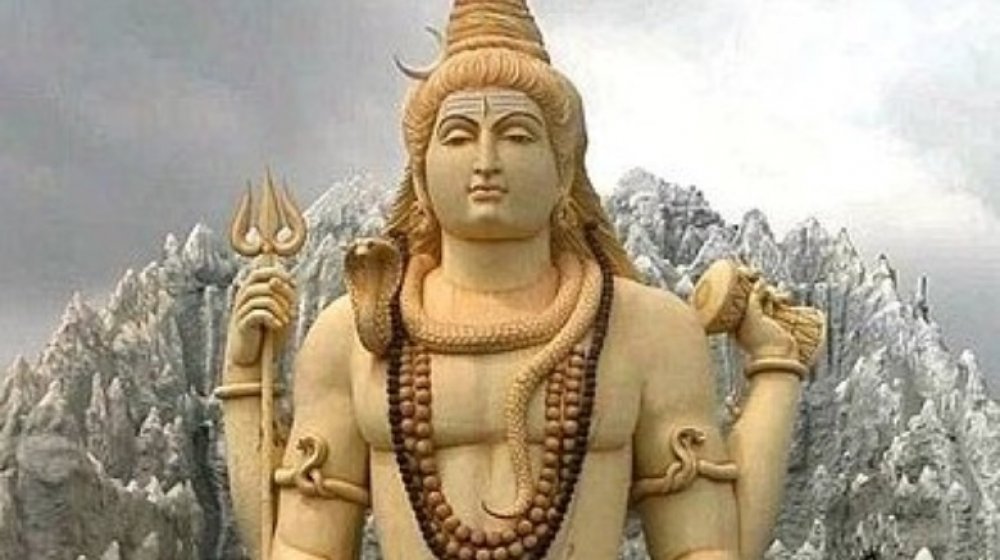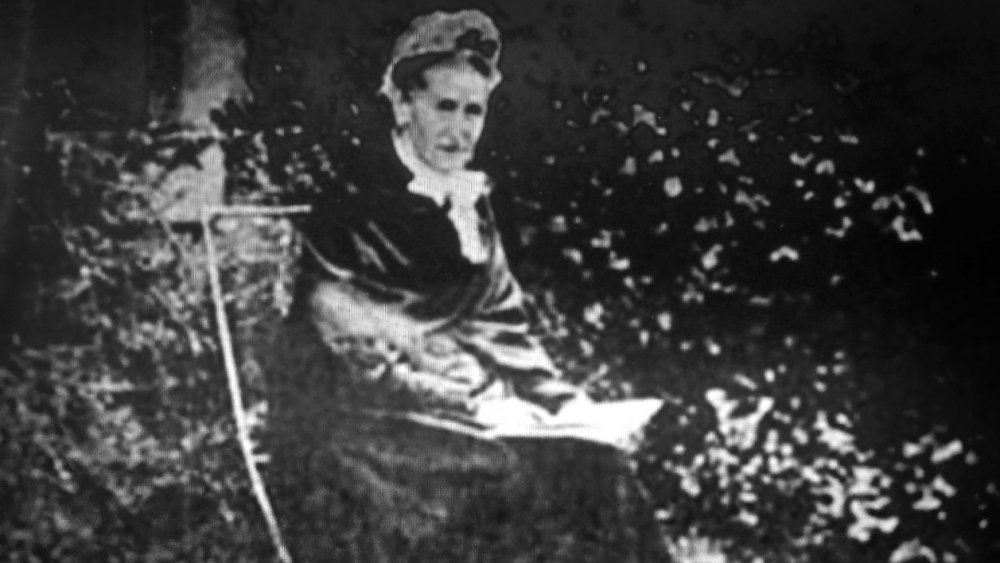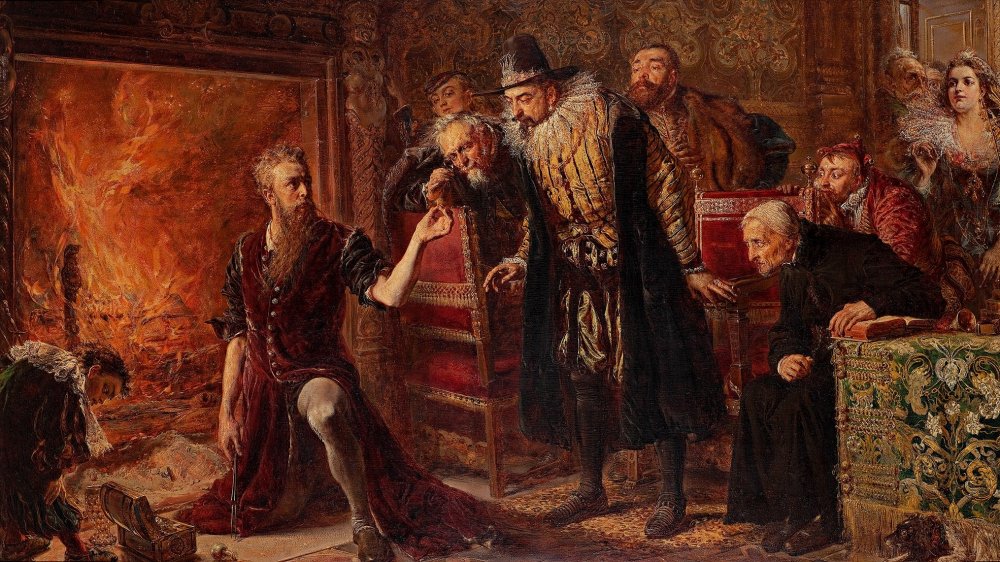The Weird History Of Alchemy
The word "alchemy" alone is enough to conjure images of strange medieval scholars or magicians, combining strange powders and smoking acids in an attempt to transmute base matter into something valuable in some moldy dungeon laboratory filled with suspicious things in sealed jars. We can all imagine what the alchemist wants: to turn lead into gold. Though the goal may be common knowledge, the processes are secretive and byzantine. Alchemy as a subject is largely a mystery, because despite its connections to modern chemical sciences, alchemical practices were often cloaked in metaphorical language and esoteric, mystical philosophy.
Perhaps needless to say, alchemy is pretty weird. Can a person pour acid on mercury until it turns to gold, or inject human genetic material into manure until it becomes a small, magical person? No, of course not. We know that now, but years ago people believed bizarre things, all over the world. How did such practices come to be? Well, you'll have to read on to learn the weird history of alchemy.
What does alchemy want?
Generally speaking, the kernel at the heart of all alchemical knowledge is if every substance is made up of some combination of the four Aristotelian elements–earth, fire, air, and water (no heart, alas)–then if you could figure out the right proportions of those four things, you could make whatever you wanted. This is, of course, the basic idea behind the most famous goal of alchemy–turning "base" metals like lead into precious metals like gold.
And as Britannica explains, transmutation was the throughline of much of alchemical thought: change a worthless metal to a valuable one, change a sick person to a healthy one, change an old person to a young one, or change something mundane into something supernatural. The goals of alchemy were always positive change, with the main goals being riches, long life, and indeed, immortality.
As such, besides the creation of gold, alchemists sought to create an elixir of immortality, panaceas that could cure any illness, and a universal solvent (i.e., a substance that could dissolve anything). At various times, any of these concepts was associated with the idea of the philosopher's stone (or sorcerer's stone, for any Americans out there). And, you know, if you just happen to make a tiny jar person that lets you turn into a cow or magically produce poisonous snakes, that's just another cool alchemical bonus.
Alchemy has its origins in Egypt
There are three major strands of alchemy that developed over the world. The form most modern people are likely most familiar with is Western alchemy, which began in Hellenistic Egypt before moving into the Arab world and finally into medieval Europe, where the image of a guy in a moldy old castle trying to grow a man in a jar would have taken shape. But before you get to European homunculi, you have to start in the great Egyptian city of Alexandria, at one time the center of all the world's knowledge.
As the Encyclopedia Britannica explains, Alexandria, as a melting pot of Egyptian, Greek, and Babylonian learning, became the natural starting point for the odd mix of philosophy, technology, and mysticism that is alchemy. One of the earliest recognized authors on the topic of alchemy is the possibly fictional Zosimus of Panopolis, who traced the origins of his work to the arts of metallurgy taught to human women by the fallen angels who made giant babies with them in the apocryphal Book of Enoch. Zosimus also credits most of the innovations of alchemy to a woman known only as Maria the Jewess.
Strangely, Maria the Jewess's most enduring legacy might be as the credited inventor of the heating apparatus known as a bain-marie (literally "Maria's bath"), which you might remember causing Steph to mess up her Stilton souffles on The Great British Baking Show.
The thrice-great god of alchemy
The central figure of the mythology of Hellenistic alchemy is Hermes Trismegistus ("Hermes the three-times-the-greatest"), who, like alchemy itself, is a weird mashup of Greek and Egyptian cultures. As the Gnosis Archive explains, at the heart of Hermes Trismegistus is, as you might guess, the Greek god Hermes. If you only have a passing familiarity with Greek mythology, you might just think of Hermes as the guy with the wing hat (and maybe he delivers flowers?), but really he was the god of such things as communication, quick thinking, and invention. However, one of the ways the Greeks and Romans were so successful in their empire building is they were able to reconcile their own polytheistic religion with those of their conquered territories by saying, "Hey, your guy is like our guy; they're the same, actually," a process known as syncretism.
So Hermes Trismegistus is Greek Hermes, but he's also Egyptian Thoth, who, like Hermes, was a god of communication, language, and secret knowledge. But he was also, like, a regular dude? In many of the writings surrounding Hermes Trismegistus, he is treated more like a mysterious prophet and teacher than Two Gods Who Are One. This fictional-or-is-he-two-gods prophet is the credited author of a wide body of sacred texts known as the Hermetic Corpus, which explain alchemy, astrology, and the nature of the cosmos, among other subjects.
The rise of Islamic alchemy
Following the fall of the Western Roman Empire, which kicked off the era commonly referred to as the Dark Ages, the torch of alchemical knowledge was picked up by the Arab world, which became the leading intellectual center in this era. According to Explorable, Islamic alchemists refined the ideas of Greek alchemy into something more closely approaching recognizable scientific methods, perhaps ironically by focusing on the Aristotelian idea of the four classical elements.
One of the leading Islamic alchemists was Jabir ibn Hayyan, to whom a corpus of over 3,000 alchemical works–including a number of works by a Latin-speaking European impostor who called himself by the Latinized Geber–are credited with wildly varying degrees of probability. Jabir felt every substance contained some proportion of the four Aristotelian natures–hot, cold, wet, and dry–such that the portions of each nature in every substance added up to a multiple of 17. Science! He also argued all metals were made of some combination of mercury, which is the pure metal, and sulfur, which was a corruptive element. Find a way to balance that combination, and you can make whatever.
The ultimate goal of Jabir's work is a process known as takwin, by which he would be able to create artificial life in laboratory conditions, Frankenstein-style. Books within the Jabirian corpus include recipes for terrifying snakes, scorpions, and even humans, all of which would follow the commands of their creator.
Alchemy gets European
The dawn of what is known as the High Middle Ages in the 12th century saw a renaissance of sorts in which formerly lost knowledge was recovered, leading to an intellectual revitalization in Europe. Among the material introduced (or reintroduced) to medieval Europe at this time were translations of Arabic writings on alchemy and the works of Aristotle. And so it was, as ThoughtCo explains, alchemy reached its best-known form as the mixture of science, pseudoscience, philosophy, and the occult practiced by Europeans in funny hats we think of today.
Although many medieval alchemists were Catholic–including possibly the most famous theologian of all time Thomas Aquinas–the pre-Christian origins and secretive nature of alchemy led to the practice being condemned by the Church, and soon alchemists found themselves with reputations as liars, thieves, or wizards. In fact, Roger Bacon, a 13th century monk who was a very real human and the first European to figure out gunpowder, was widely reputed to have made a magical brass robot head powered by the Devil that could tell the future.
Another famous name associated with medieval alchemy is Nicholas Flamel, who was a real person and not just a Harry Potter character. While his posthumous reputation has been that of a great alchemist who actually managed to discover the philosopher's stone and achieve immortality, it turns out Flamel probably didn't actually practice alchemy at all.
Alchemy's magnum opus
Most of the processes related to alchemy ultimately aspired to the alteration and refinement of substances, and the greatest attainable height of that idea is frequently called the magnum opus–the great work–of alchemy. As Learn Religions explains, this process is difficult for us to understand from a modern perspective, because alchemists so frequently used coded and allegorical language to discuss their work, and because so many alchemical authors talk about it differently. The goal of the magnum opus seems to have been a refinement and purification of both body and soul relating to the creation of the philosopher's stone out of the prima materia, the base matter of the universe.
While hard to understand, the process included (usually) four different stages related to color: nigredo, a blackening, representing decomposition and decay; albedo, a whitening, representing purification; citrinitas, a yellowing, a transition from silver to gold; and rubedo, a reddening, as red was associated with the color gold. Through these processes, the prima materia (possibly an allegory for the soul) is broken down and refined again and again, ultimately being reduced to two opposite substances known as the red king and the white queen (which might be sulfur and mercury?). These substances combine in an allegorical process called a chemical marriage, which results in the creation of a two-headed hermaphroditic being called a rebis, which represents a unification of spirit and matter.
Alchemy in the Renaissance
Alchemy arguably reached its height in the Renaissance, thanks in part to new translations of the Hermetic Corpus and the writings of Plato from the 15th century allowing Greek-illiterate Europeans to experience these works for the first time. This saw a resurgence of Platonic philosophy and a hefty injection of Hermetic mysticism back into alchemy. As such, alchemy began at this time forming different branches, some of which pursued alchemy's more medical applications, and others that aspired for more occultic goals. Also at this time, many of history's most famous alchemists, such as Heinrich Cornelius Agrippa, John Dee, and Philippus Aureolus Paracelsus, plied their trade.
Agrippa leaned into the occultic side of things, combining alchemy with Hermeticism and Jewish Kabbalah in a practice known as natural magic. As Llewellyn explains, natural magic arises from the mystical properties of natural objects such as herbs or the stars, as opposed to the magic that comes from performing rituals or summoning creepy demons. Agrippa and Dee (consultant to Queen Elizabeth I and renowned angel summoner) both held to the Hermetic principle "as above, so below," which states every material object is a reflection of higher spiritual powers.
Meanwhile, Paracelsus, while still a huckster in some respects, was instrumental in the transition from alchemy to chemistry, moving away from the pursuit of gold and examining the medicinal properties of various substances and exploring the ties between mental and physical health.
The accomplishments of alchemy
While in a lot of ways alchemy as a concept is a sort of representative shorthand for pseudoscience, you can't say literally no good came from it. Yes, it's true no one ever figured out how to turn aluminum foil to gold without some kind of particle accelerator and so far there hasn't been any real progress made on an elixir of immortality, but even if only by accident, medieval and early modern alchemists made a number of contributions that continue to affect our lives today.
Although Britannica is hesitant to credit alchemy with many of the developments that led to chemistry (preferring instead to attribute those discoveries to pharmacists and other medical chemists), even they can't deny the search for the philosopher's stone led to the discovery of substances such as sal ammoniac (very important to weird European candy) and saltpeter, as well as hydrochloric acid, nitric acid, and sodium carbonate. Oh yeah: also alcohol, which you may have heard of. Alchemists were also the first to identify such elements as antimony, arsenic, and bismuth. Additionally, lots of the tools and laboratory devices developed by alchemists such as Maria the Jewess–including implements for distillation, sublimation, and heating–are still used today. So while, yes, alchemy was largely a practice of quacks and charlatans eager for gold, they might have accidentally done some good for science.
Alchemy in ancient China
While modern readers are likely most familiar with the Western alchemy that began in Hellenistic Egypt, alchemy actually developed independently in three different branches in three geographic regions. Of these, the earliest branch was Chinese alchemy, which, as Britannica explains, has roots stretching back earlier than the others, because it was based less in metallurgy than in an even earlier art: medicine. As such, Chinese alchemy was much less concerned with turning lead to gold than finding the Grand Elixir of Immortality. (Britannica posits the difference in goals between Chinese and Western alchemists might be down to the religions of the respective cultures: Western alchemists were less concerned with immortality since their religion promised it to them, whereas Chinese religions at the time made no such promises, so alchemy picked up the slack.)
And so Chinese alchemy's chief aim was creating a solution of "drinkable gold," which was supposed to have the magical properties that would endow the drinker with immortality. However, since the alchemical elixirs tended to be made of mercury, sulfur, and arsenic, the opposite effect was usually the result. In fact, a fashion for these elixirs among the upper class in the Song dynasty led to a series of accidental suicides among Chinese emperors. Ultimately, these deaths brought about the death of alchemy among the Chinese, who decided to give Buddhism a shot instead.
Alchemy in ancient India
The last major branch of alchemy comes from the Indian subcontinent, but its origins are hard to pin down. According to Britannica, it's possible Indian alchemists were influenced by the Chinese and by Hellenistic Greeks in the Alexander the Great-instituted province of Gandhara, but it's also equally likely the reverse is true, and the Chinese and Greeks were influenced by Indian alchemy. As Indian alchemy bears similarities to the other two branches, it probably won't surprise you its chief aims were the creation of gold and immortality, ideas which all three branches saw as connected. That said, India was less concerned with turning trash into gold than the Europeans, and less concerned with immortality than the Chinese. Their chief interest seemed to be using mineral substances to remedy specific diseases and promoting long life.
Among the main goals of Indian alchemy were the creation of a divine body and the achievement of immortality while in that magic body. As with the other branches of alchemy, the two central metals of Indian alchemy were mercury and sulfur, which they interpreted as the, uh, typically male bodily fluid of the god Shiva and the, ahem, typically female bodily fluid of the goddess Devi. Presumably since drinking a mixture of those things was the source of eternal life, that's why no one ever attained it.
Alchemy and the occult revival
Alchemy more or less died out in the modern period thanks to the advances in what we would consider "actual science" during the Enlightenment, with the possibility of making gold via chemical means eventually disproved in the 19th century. Plus, the fact people were dying from drinking mercury and arsenic didn't help alchemy's chances. But as the rise of anti-vaxxers has shown, there is no practice so archaic, discredited, and dangerous that rich white people won't try to bring it back.
As the Gnosis Archives explains, the 19th century saw a revival in the interest of all things occult, which led to the creation of various esoteric and exclusive occult secret societies, many of whom resumed the pursuit of alchemy. However, by this time, alchemy had been fully divided from chemistry and was seen entirely as the realm of gold-making fraudsters, and so the new school of alchemists–who generally referred to themselves as Hermeticists–claimed alchemy was not at all a series of practical applications, but instead a series of allegories for spiritual purification and enlightenment. According to 19th century spiritual alchemist Mary Anne Atwood, "Alchemy is an universal art of vital chemistry which by fermenting the human spirit purifies and finally dissolves it," which sounds a lot like, "Um, actually, turning lead into gold obviously isn't a real thing and was just a metaphor the whole time and you were just too dumb to get it." Sure thing, Mary Anne.
The convoluted etymology of alchemy
The concept of alchemy itself is a strange mishmash of cultures, so it's not a huge surprise even the word "alchemy" only gets to us via a fairly winding path through a murderer's row of major languages. As the Online Etymology Dictionary explains, the word alchemy comes to English directly from the Old French alchimie, which itself comes from the Medieval Latin word alkimia. That part isn't surprising; that's the exact origin of an enormous percentage of English words.
It's when you look into where the Latin word comes from things get complicated. The Latin alkimia comes from the Arabic word al-kimiya (the al here just meaning "the," which can also be seen in English words like algebra and alcohol), but the Arabic word comes from the Greek word khemeia. All of these words mean, well, roughly, "alchemy." So where did the Greek come from? Harder to say, but possibly from an old name for Egypt, Khemia, meaning "land of black earth," since alchemy first developed in Egypt, but it might also come from a Greek word meaning "juice," because alchemy is like a mingling of a bunch of weird juices mixed together. So, it either means "the black dirt thing" or "the juice thing" depending on who you believe.
And, yes, of course the word chemistry is related. The two words were synonymous for a while, but gained their scientific vs. pseudoscientific distinction around 1600.
